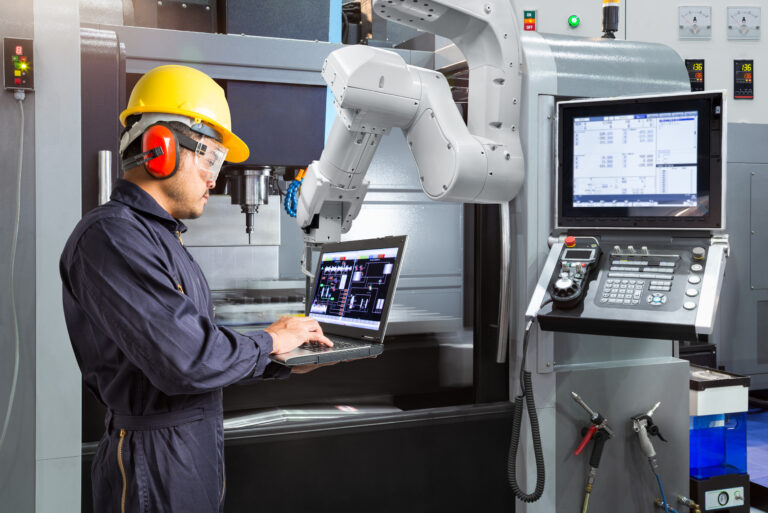In the packaging industry, automated packaging systems have evolved rapidly over recent years. As equipment becomes more “intelligent” and new solutions are introduced, you could be spending more time and money than necessary on older, outdated equipment.
This raises an important question, though. How do you know if your system is outdated? Beyond this, when is the right time to introduce new packaging automation equipment into your operational workflow?
Today, we are going to highlight some of the key signs that indicate it is time to upgrade your existing equipment and replace or augment it with a newer system that will deliver a noticeably enhanced performance.
1: Constant Downtime and Mechanical Issues
The downtime and mechanical issues created by outdated equipment cost more than just time. They can also interrupt your workflow and impede your productivity, which in turn, can create a steep uphill climb towards your target profitability.
In some cases, older automation solutions may not be currently supported by the manufacturer. If this applies to your equipment, you may be left in a position where you are forced to troubleshoot on your own or hire an expensive third-party to attempt a repair.
2: Long Changeover Times
When manufacturing businesses experience long changeover times, it is often a sign that their packaging automation system is outdated. In today’s competitive marketplace, manufacturers need to be able to quickly adapt to ever-changing customer demands and need a solution that can package multiple types of products with minimal changeover or set up time. Examples may include adjusting belt speeds or fixturing when switching carton sizes and manually calibrating fill sensors.
Clearly, flexible and adaptable automation systems are preferred to older ones that are one-dimensional and slow-performing. As a result of lengthy changeovers, manufacturers are forced to waste valuable time and resources when changing over their production lines. This not only reduces efficiency, but it also increases costs and reduces profitability.
3: Unable to Meet Production Demands
Older automation equipment was often designed for a single or narrow range of packaging types and materials. To stay competitive, you may want to expand your offering in-house or to your manufacturing partners; however, a limited scope of packaging services can create roadblocks to developing new business or retaining existing customers.
Newer systems with more agile and adjustable controls and monitoring capabilities give you more flexibility. As a result you may be able to scale their production across more media, material types, and packaging shapes. With the added benefit of fully automated functionality, these changes can be completed with little to no manual effort, compared to older systems.
4: Inconsistent Packaging Quality
Package quality can suffer when an automation system is outdated. New technology offers sensors and vision systems that can detect and reject damaged or defective products, but outdated systems lack this ability.
As a result, products arrive at the customer’s doorstep damaged or in poor condition, yielding complaints and returns. Inefficient packaging also results in more waste, as rejected products take up valuable space on the line.
Updating your packaging automation system can help to ensure that only consistent, high-quality products are delivered to your customers. Investing in new equipment now can help you avoid the frustrations of inconsistent package quality in the future.
What’s more, legacy equipment may not be adept at handling the latest packaging materials such as lightweight paperboard, smooth-surfaced or recycled plastics, or specialty labels. Upgrading to a system compatible with these and other materials ensures your equipment doesn’t inadvertently damage the packaging and compromise product quality.
Here are some possible reasons your packaging quality has become inconsistent due to your current packaging equipment:
It requires too much manual intervention: Outdated systems are often overly reliant on manual intervention to make up for the lack of modern technology. This can create more room for human error and inefficiencies.
Limited scope of capabilities: Older systems may not have the capability to properly handle new or different types of products or packaging materials. This can also lead to inconsistency in the quality of packages (and the items inside) if one attempts to introduce nonstandard packaging requirements.
Incompatibility with workflow: Outdated systems may not have the built-in connectivity to properly communicate with other parts of the manufacturing process. This can lead to products being improperly packaged, which can also lead to inconsistency in package quality.
5: Rising Energy Costs
Many manufacturers are feeling the squeeze as energy costs continue to rise. While there are a number of factors that can contribute to this increase, one often-overlooked culprit is outdated machinery.
Older systems are often less energy-efficient than newer models, which means that they can end up costing more to operate. In addition, outdated systems may not be able to take advantage of new developments in packaging technology (e.g., integrated components to insert odd-sized products, measure and trim liners, or automated precision sealing systems), meaning that they are likely to become even less efficient over time.
As a result, manufacturers who find themselves struggling to keep their energy costs under control may want to consider investing in a new packaging automation system. This will help to reduce energy costs so that you can save more revenue or reallocate it to meeting other urgent business needs.
Get Custom Packaging Automation Equipment Tailored to Your Business
To experience the difference that comes from upgrading your packaging equipment, consider integrating a custom automation solution into your operations.
At Force Design, we collaborate with manufacturers like you to design custom packaging automation solutions tailored to their specific business needs. We’ll help you identify the appropriate equipment options to meet your production goals, and then we will design and install a turnkey system. As you continue to innovate, we’ll be there to support you along the way.
To learn how we can make automation work for you and your business, please contact us today!



